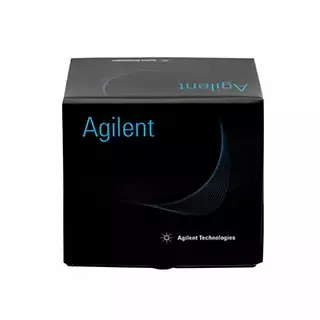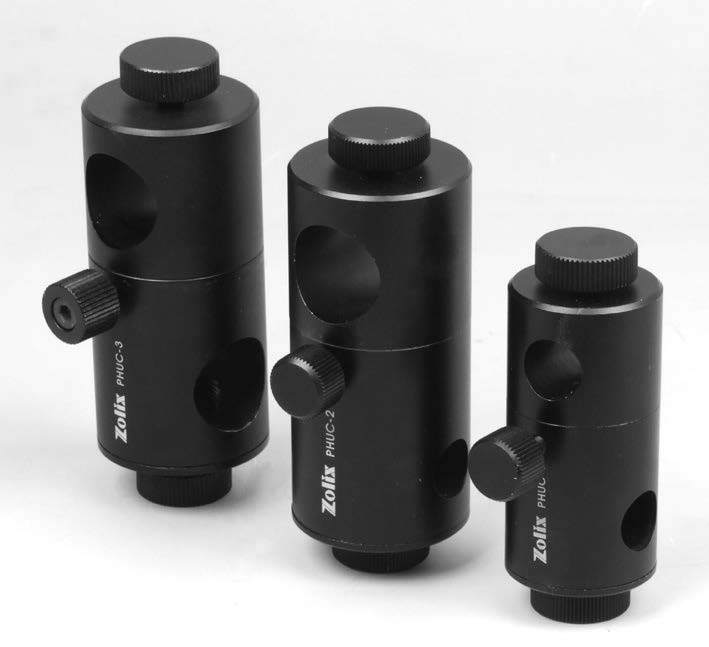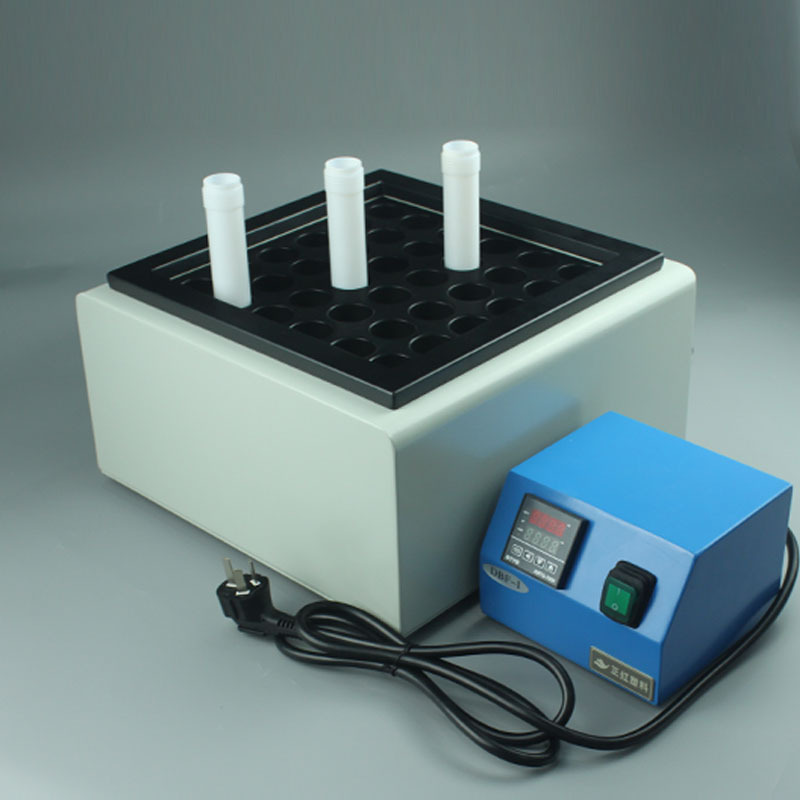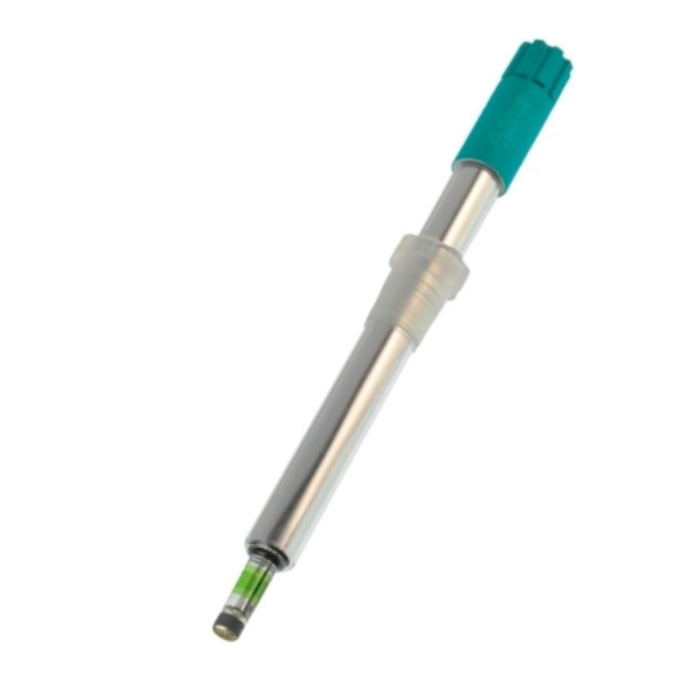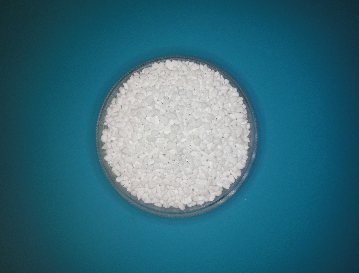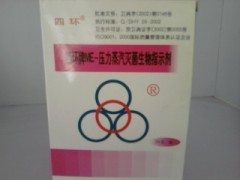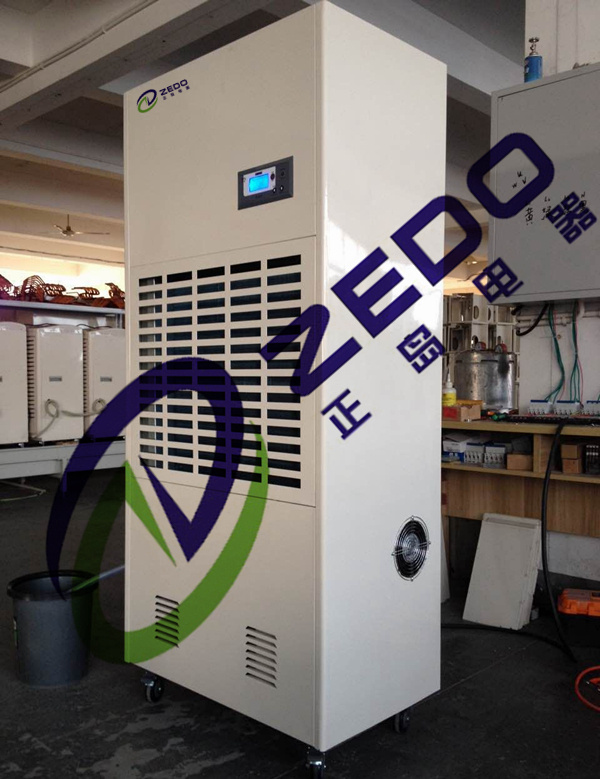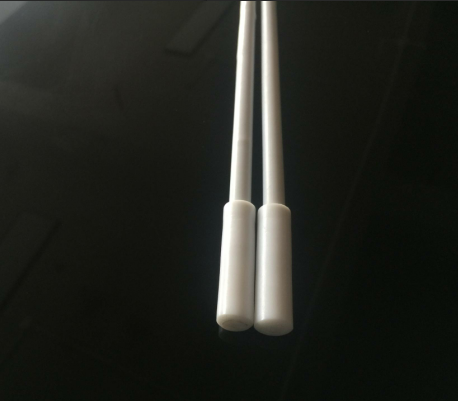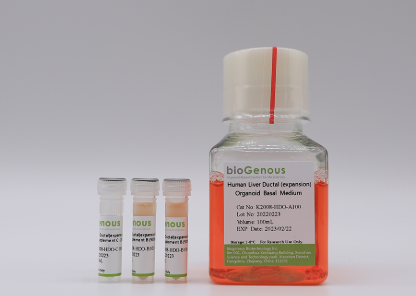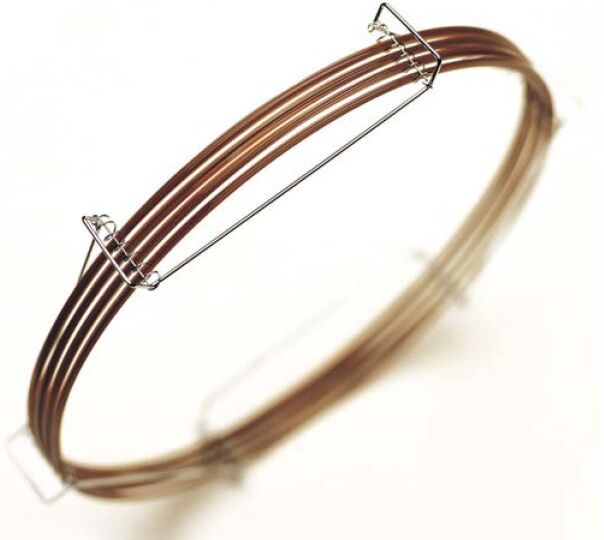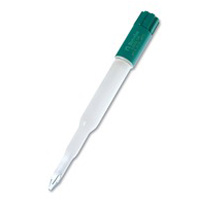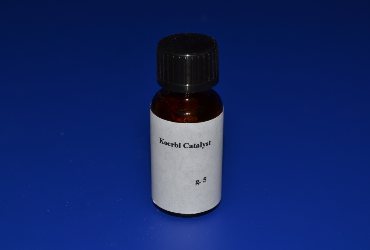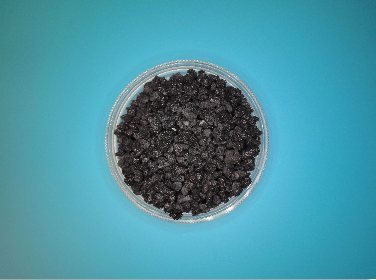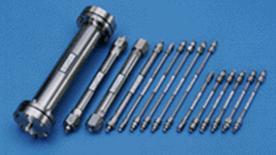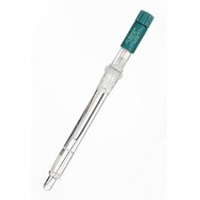类器官Human Intestinal Organoid Kit(人小肠)
产品介绍Product Description:bioGenousTMHuman Intestinal Organoid Kit is a chemically defined cell culture medium for establishment and maintenance of human intestinal organoids(hIOs) derived from adult stem cells. Self-renewal of the intestinal epithelium is driven by the proliferation of stem cells and their progenitors located in crypts. Human intestinal organoids display all hallmarks of the intestinal epithelium in terms of architecture, cell type composition, and self-renewal dynamics, therefore hold great promise for unprecedented studies of human intestinal development and disease, human intestinal organoids may also have applications in regenerative biology through ex vivo expansion of the intestinal epithelium.技术参数Product Information:ComponentComponent Cat#VolumeStorage& StabilitybioGenousTMHuman Intestinal Organoid Basal MediumK2002-HI-A100/A500100mL/500 mL4℃,12 monthsbioGenousTMHuman Intestinal Organoid Supplement B(50x)K2002-HI-B100/B5002mL/10 mL-20℃,avoid repeated freeze-thaw cycles, 12 monthsbioGenousTMHuman Intestinal Organoid Supplement C(250x)K2002-HI-C100/C5000.4mL/2 mL-20℃, avoid repeated freeze-thaw cycles, 12 monthsbioGenousTMHuman Intestinal Organoid Supplement D(250x)K2002-HI-D100/D5000.1mL/0.5 mL-20℃, avoid repeated freeze-thaw cycles, 12 monthsPreparation of Human Intestinal Organoid Expansion Medium and Maintenance MediumUse sterile technique to prepare the human intestinal organoid expansion medium and maintenance medium. hIOs grown in Human Intestinal Organoid Expansion Medium overwhelmingly consisted ofLGR5+stem cells, cycling transit amplifying (TA) cells, early enterocytes and a small number of goblet cells. Organoids grown in Human Intestinal Organoid Maintenance Medium contain LGR5+stem cells, TA cells, early and mature enterocytes, goblet cells, M cells and enteroendocrine cells, as well as a low number of Paneth cells and tuft cells. The following examples are for preparing 10 mL of Expansion Medium and Maintenance Medium. If preparing other volumes, adjust accordingly.1.Thaw Human Intestinal Organoid Supplement B(50x), Human Intestinal Organoid Supplement C(250x) and Human Intestinal Organoid Supplement D(250x) on ice. Mix thoroughly.NOTE:Once thawed, use immediately or aliquot and store at -20°C for not more than 10 months. After thawing the aliquots, use immediately. Do not re-freeze.2.For Human Intestinal Organoid Expansion Medium. Add 200 μL Human Intestinal Organoid Supplement B(50x), 40 μL Human Intestinal Organoid Supplement C(250x) and 40 μL Human Intestinal Organoid Supplement D(250x) to 9.72 mL Human Intestinal Organoid Basal Medium. Mix thoroughly.3.For Human Intestinal Organoid Maintenance Medium. Add 200 μL Human Intestinal Organoid Supplement B(50x) and 40 μL Human Intestinal Organoid Supplement C(250x) to 9.76 mL Human Intestinal Organoid Basal Medium. Mix thoroughly.NOTE:If not use immediately, store complete medium at 2-8°C for not more than 2 weeks. bioGenousTMHuman Intestinal Organoid Supplement B contains fungicide and antibiotics(50x).Protocol for Establishment of Human Intestinal OrganoidsCAUTIONStudies involving primary human tissue material must follow all relevant institutional and governmental regulations. Informed consent must be obtained from all subjects before the collection of the primary human tissue material.Establishment of Organoids from Primary Tissue1.Collect primary human intestinal tissue pieces in ice-cold Primary Tissue Storage Solution (K601005) with conical tubes. Keep tissue samples at 4°C until the start of the isolation.2.Assess whether the obtained tissue pieces consist purely of epithelium or if they also contain fat or muscle tissue. If so, remove non-epithelial components as much as possible using surgical scissors or scalpels and forceps under a dissection microscope. If no fat or muscle tissue are present, continue to the next step immediately.3.Rinse the intestinal tissuewith Epithelial Organoid Basal Medium(B213151) or DPBSuntil the supernatant is clear.4.Before crypt isolation, thaw Matrigel on ice and keep it cold. Add 5 mL of FBS to 45 mL of Epithelial Organoid Basal Medium to prepare 10% (vol/vol) FBS medium.5.Mince the tissue into small fragments of 5 mm3in a cell culture dish using surgical scissors or scalpels.CRITICALThe dissected samples must be small enough to pass through the tip of a 10 mL pipette.6.Place the dissected pieces of sample into a 15 mL conical tube containing 10 mL of cold DPBS.7.Wash the samples by pipetting with a 10 mL pipette at least ten times.CRITICALFor the subsequent steps, coat the inner surface of every 10 mL pipette with 10% (vol/vol) FBS medium before use to avoid adherence of the samples on the pipette wall.8.Stand the tube still until the samples settle at the bottom. Aspirate the supernatant with a 10 mL pipette and add 10 mL of cold DPBS.9.Repeat Steps 7 and 8 3–5 times until the supernatant is free of debris.CRITICALThorough washing of the sample is crucial to avoid bacterial contamination.10.Add 10 mL of cold DPBS supplemented with 2.5 mM EDTA (E219121) to the tube. Place the tube on a rocking shaker and rock it gently at 4 °C for 40 min.11.After treatment with EDTA, stand the tube still until the samples settle to the bottom of the tube, and then aspirate the supernatant with a 10 mL pipette and add 10 mL of cold DPBS.12.Stand the tube still until the samples settle at the bottom. Aspirate the supernatant with a 10 mL pipette.13.Add 10 mL of cold DPBS and pipette up and down at least ten times with a 10 mL pipette. Allowed the tissue fragments to settle down under normal gravity for at least 30s. The crypts will be released into the supernatant by pipetting. Place the supernatant containing the isolated crypts into a new 15 mL tube.14.Spin the crypts at 4°C at 400g for 3 min. Remove the supernatant and place the tube on ice.15.Resuspend the pellet in 1 mL of DPBS and transfer the crypt suspension into a new 1.5 mL tube. Drop 20 μL of the crypt suspension on a petri dish. Count the number of crypts under a stereomicroscope and calculate the total number of crypts.16.Spin the crypts at 4°C at 400g for 3 min. Aspirate and discard the supernatant.17.Aspirate the supernatant and resuspend the pellet in Matrigel. Matrigel should be kept on ice to prevent it from solidifying thus, work quickly. The amount of Matrigel depends on the size of the pellet. Approximately 50-250 crypts should be plated in 25 μL of Matrigel.CRITICALDo not dilute Matrigel too much (Matrigel should be 70% (Matrigel vol/Total vol)) to ensure formation of solid droplets.18.Plate the Matrigel containing organoids on the bottom of 24-well cell culture plates in droplets of ~30 μL each around the center of the well.CRITICALOnce the organoids are resuspended in Matrigel, proceed with plating as quickly as possible, as the Matrigel may solidify in the tube or pipette tip. Do not let the Matrigel touch the wall of wells.19.Place the culture plate into a humidified incubator at 37 °C and 5% (vol/vol) CO2for15-25 minto let the Matrigel solidify.20.Prepare the required amount of bioGenousTMHuman Intestinal Organoid Expansion Medium.21.Once the Matrigel droplets are solidified (15-25 min), open the plate and carefully add 500 μL of Organoid Complete Medium to each well.CRITICALDo not add the medium directly on top of the Matrigel droplets, as this might disrupt the droplets.22.Place the culture plate in a humidified incubator at 37 °C and 5% (vol/vol) CO2.23.Change the medium every 3 days by carefully aspirating medium from the wells and replacing it with fresh, pre-warmed Organoid Complete Medium.24.Closely monitor the organoid formation. Ideally, human intestinal organoids should be passaged for the first time between 5 and 8 days after initial plating.Splitting and Passaging of Organoids25.Pipette up and down to disrupt the Matrigel, and transfer the organoid suspension into a 1.5 mL conical tube.26.Pipette the organoid suspension up and down to mix thoroughly.Use the bottom of the tube to create pressure, which will aid the removal of Matrigel.27.Centrifuge organoids at 200g for 3 min at room temperature.28.Aspirate the supernatant, and split organoids using either mechanical disruption or Organoid Dissociation Solution (E238001). For mechanical disruption, resuspend the pellet in 1 mL of Organoid Basal Medium. Use a pipette tip to pipette the organoid suspension up and down 30 times. Use the bottom of the tube to create pressure, which will aid organoid disruption. In case of Organoid Dissociation Solution-based cell dissociation, resuspend the pellet in 0.2 mL of Organoid Dissociation Solution, pipette up and down and incubate at 37 °C until organoids fall apart. Pipette up and down with a filter tip for ≥10 times every 1 min to aid in the disruption of the organoids. Monitor digestion closely to keep the incubation time inOrganoid Dissociation Solution to a minimum.CRITICALDo not dissociate in Organoid Dissociation Solution for 3 min, as this may result in poor organoid outgrowth or even loss of the culture. As a rule of thumb, digestion is complete if a mixture of small lumps of cells (consisting of 10–50 cells) can be observed.29.After shearing is complete, wash once by topping up with 1 mL ofOrganoid Basal Medium, and centrifuge at 200g for 3 min at room temperature.30.Aspirate the supernatant and resuspend the organoid pellet in 70% (vol/vol) Matrigel, and plate organoids in droplets on the bottom of a culture plate as describedin Steps 12. After plating is complete, transfer the plate into a humidified incubator at 37 °C and 5% (vol/vol) CO2for 15–25 min.31.Pre-warm Human Intestinal Organoid Maintenance Medium at 37 °C.32.After the Matrigel droplets have solidified (15–25 min), carefully pipette pre-warmed medium into the wells.33.Place culture plates in a humidified incubator at 37 °C and 5% (vol/vol) CO2 until the organoids are needed for further experiments.



